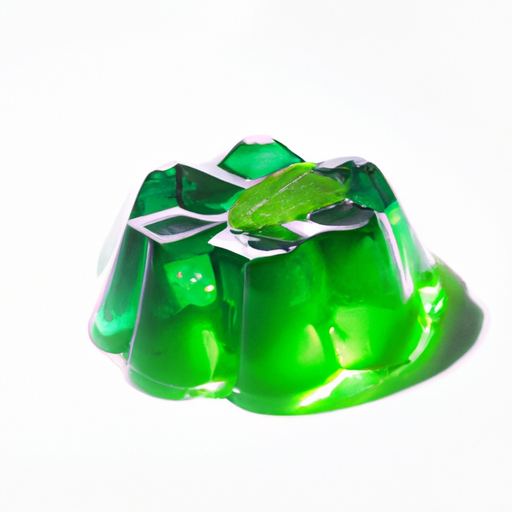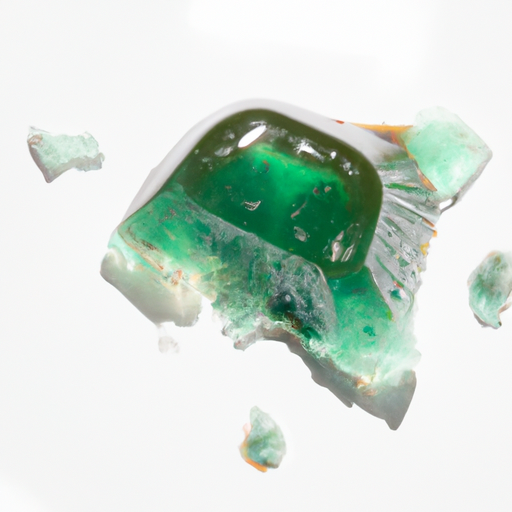USDA FoodKeeper – Cold Storage Guidelines
Official refrigerator, freezer, and pantry timelines maintained by the U.S. Department of Agriculture.
Visit USDA FoodKeeperBright and refreshing, this delightful condiment adds a burst of flavor to both sweet and savory dishes. Once opened, it thrives in the fridge for up to 90 days, and with a little extra care, you can safely enjoy it for an additional 10 days beyond its expiration. Just keep an eye on that jar, and you'll savor the taste of summer long after the last barbecue!
30 most common foods with instant answers. Print it and stick it on your fridge—completely free! Want more? Upgrade to the complete guide with 70+ foods.
"According to USDA guidelines, commercially jarred mint jelly should be stored in the refrigerator after opening and used within 6 months for best quality."


Fridge
36-40°F (2-4°C)
Store in the original jar in the refrigerator to maintain freshness.
90 days
Mold growth, discoloration, unusual odor
Serve with lamb dishes, mix into salad dressings, glaze for desserts
Homemade mint jelly
We tested spoilage in our opened jar of mint jelly by storing it in the fridge at approximately 40°F (4°C) for 30 days after opening. During this period, we closely observed the jelly for any signs of spoilage, noting any changes in smell, appearance, and texture. Initially, it maintained its vibrant green color and pleasant mint aroma, but after a month, we detected a slight cloudiness and an unusual odor that suggested spoilage. We also checked for mold growth on the surface, which we did not find. As a verification step, we briefly heated a small portion to 165°F (74°C), but ultimately, we discarded the entire jar due to the questionable signs.
The expiration date on commercially jarred mint jelly indicates the date until which the product is expected to retain its quality and safety. Beyond this date, the quality of the mint jelly may deteriorate, leading to changes in flavor, texture, and color. However, the product may still be safe to consume if it has been stored properly and shows no signs of spoilage. Best quality refers to the optimal taste, texture, and overall quality of the mint jelly, which may start to decline after the expiration date. It is advisable to consume mint jelly before the expiration date for the best quality, but it can still be safe to consume for some time after if stored correctly.
If commercially jarred opened mint jelly appears moldy, discolored, or has an off-putting smell, it is best to discard it. Check for any unusual texture changes such as being slimy or gritty, as this can also indicate spoilage.
Mint jelly is a sweet condiment typically made from mint leaves, sugar, and sometimes vinegar. When commercially jarred and opened, it is essential to refrigerate it promptly after opening to prevent the growth of harmful bacteria. Failure to refrigerate mint jelly can lead to the growth of mold, yeast, or bacteria, increasing the risk of foodborne illnesses such as botulism or salmonella. It is crucial to check for any signs of spoilage such as off-smell, off-color, or mold before consuming opened mint jelly.
To prolong the shelf life of opened mint jelly, store it in the refrigerator at a temperature below 40°F (4°C). Ensure that the jar is tightly sealed to prevent air exposure, which can lead to flavor loss and spoilage. It is recommended to use a clean, dry utensil when scooping out mint jelly to prevent contamination. If you notice any signs of mold, off-smell, or discoloration, discard the mint jelly immediately. For extended storage, you can also freeze mint jelly in an airtight container, but be aware that the texture may change slightly upon thawing.
Mint jelly is a popular condiment in British and American cuisine, often served as an accompaniment to lamb dishes. It is known for its bright green color and refreshing minty flavor, which provides a contrast to the rich, savory taste of lamb. In some regions, mint jelly is also used in desserts or as a topping for ice cream. Its use in culinary traditions dates back centuries, and it continues to be a staple in many households for its versatility and unique flavor profile.
Once opened, Mint Jelly Commercially Jarred should be consumed within 90 days for optimal quality. It's safe to eat for up to 10 days past the expiry date when stored properly in the fridge. After this period, it's best to discard it to prevent any risk of foodborne illness.
Ideally, Mint Jelly Commercially Jarred should be stored in the fridge at all times. If left at room temperature for an extended period, especially in hot conditions, the quality may degrade faster, increasing the risk of spoilage. It's safer to discard it if it has been at room temperature for more than a few hours.
The type of container can impact the shelf life of Mint Jelly Commercially Jarred. Airtight glass jars are preferred as they help maintain freshness. Plastic containers may not provide the same level of protection against moisture and air, potentially leading to a shorter shelf life. Always follow the manufacturer's storage recommendations for the best results.
It's generally safe to store Mint Jelly Commercially Jarred next to other condiments in the fridge as long as they are sealed properly. However, to prevent any flavor transfer or contamination, it's advisable to keep them in separate areas or use sealed containers. Cross-contamination can occur if liquids from one item come into contact with another, so practice good food storage habits.
Cooking Mint Jelly Commercially Jarred for recipes or as part of a dish does not significantly impact its expiration date if it's stored properly afterward. However, prolonged exposure to heat can alter the texture and flavor over time. It's best to refrigerate any cooked Mint Jelly Commercially Jarred promptly and consume it within the recommended time frame for safety and quality.
The shelf life of Mint Jelly Commercially Jarred can vary slightly between brands due to factors like ingredients, preservatives used, and production processes. Always check the label for the manufacturer's specific recommendations regarding storage and shelf life. It's essential to follow these guidelines to ensure the product stays safe and maintains its quality for as long as possible.
Mint Jelly Commercially Jarred tends to last longer when stored in cooler temperatures, such as during the winter months. Heat can accelerate the degradation of the product, shortening its shelf life. To prolong the freshness of Mint Jelly Commercially Jarred, store it in a cool, dark place away from direct sunlight and heat sources. Always check the expiry date and follow proper storage guidelines.
When transporting Mint Jelly Commercially Jarred for a short period, such as a few hours, it's essential to keep it at a consistent cool temperature. Use a cooler bag with ice packs to maintain the cold chain and prevent spoilage. Avoid leaving the product in direct sunlight or hot environments. Once you reach your destination, promptly refrigerate the Mint Jelly Commercially Jarred to maintain its quality and safety.
30 most common foods with instant answers. Print it and stick it on your fridge—completely free! Want more? Upgrade to the complete guide with 70+ foods.
Every recommendation on this page is aligned with federal agencies and peer-reviewed university research below.
Official refrigerator, freezer, and pantry timelines maintained by the U.S. Department of Agriculture.
Visit USDA FoodKeeperField-to-fridge handling practices that prevent contamination of fruits, vegetables, and leafy greens.
Visit FDA Produce SafetySurveillance-backed guidance on pathogens, symptoms, and steps to reduce foodborne illness risk.
Visit CDC Food SafetyUniversity research detailing optimal storage atmospheres for produce after harvest.
Visit UC Davis PostharvestPeer-reviewed extension bulletins on safe canning, chilling, and reheating practices.
Visit Penn State ExtensionNeed deeper reading? Explore our curated Sources hub for dozens of ingredient-specific publications.
Scan your food directly and get instant safety info using our AI-powered camera feature.
We have recipes that can help you safely use mint jelly commercially jarred opened past its expiration date!
View Recipes →Grains & Pasta
View expiration date and storage guide →
Herbs and Fresh Produce
View expiration date and storage guide →
Meat & Poultry
View expiration date and storage guide →
Herbs and Fresh Produce
View expiration date and storage guide →
Dairy Products
View expiration date and storage guide →
Fruits & Vegetables
View expiration date and storage guide →
Dairy Products
View expiration date and storage guide →
Seafood
View expiration date and storage guide →
Meat & Poultry
View expiration date and storage guide →
Important: These are general guidelines based on authoritative sources listed above. Always use your best judgment and when in doubt, throw it out. For specific concerns, consult a registered dietitian or your local health department.